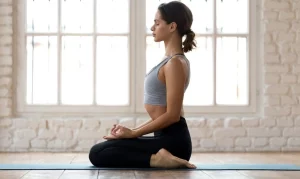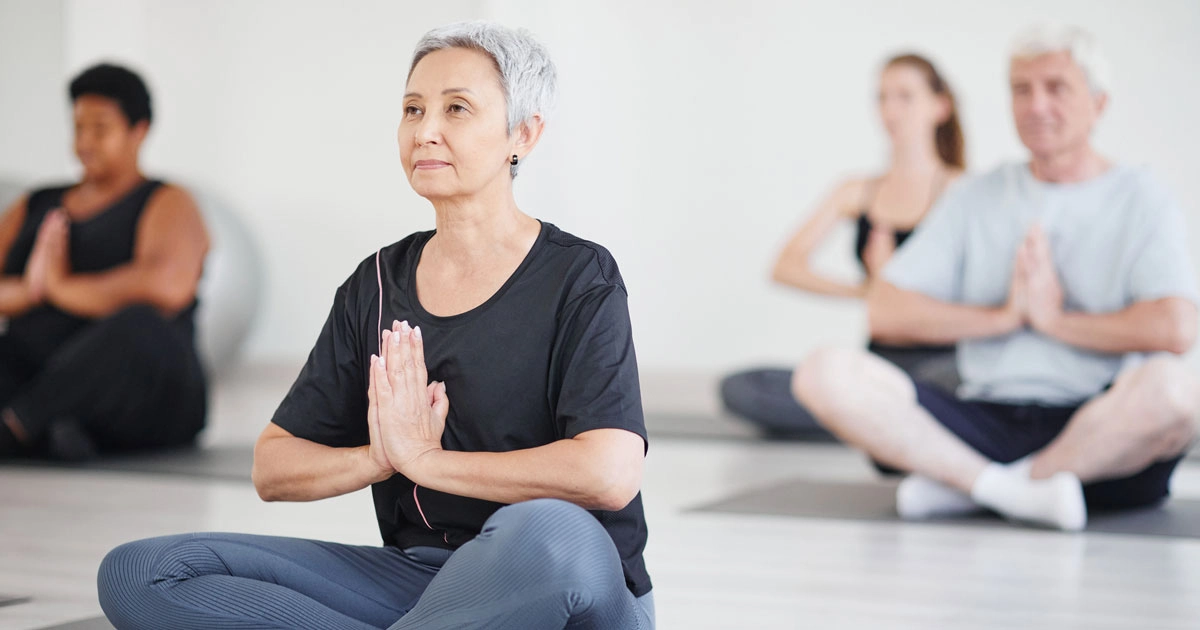Yoga offers a unique pathway to healing for those recovering from addiction. Its mindful practices encourage self-awareness and emotional regulation, essential tools in overcoming triggers. Many individuals find solace in restorative poses and community support during group sessions. This writer’s journey illustrates the profound impact of integrating yoga into recovery. However, the journey does not end there; the exploration of these techniques reveals deeper layers of transformation and resilience.
Key Takeaways
- Mindful breathing exercises in yoga promote relaxation and alleviate anxiety, essential for managing addiction triggers.
- Restorative poses enhance body awareness, helping individuals reconnect with their physical selves.
- Meditation fosters inner peace, providing clarity and strength against cravings during recovery.
- Group classes create a supportive community, reducing feelings of isolation and fostering shared understanding.
- Increased self-awareness through yoga encourages healthier emotional responses and personal storytelling in the recovery journey.
The Impact of Addiction on Mental and Physical Health
Although addiction often begins as a pursuit of pleasure or relief, its consequences extend far beyond temporary satisfaction, deeply affecting both mental and physical health. Individuals struggling with addiction frequently experience anxiety, depression, and cognitive impairments, which can exacerbate their dependence on substances. Physically, the toll can manifest through weakened immune systems, chronic pain, and various organ dysfunctions. The cycle of addiction further isolates individuals, leaving them feeling disconnected from their support networks. However, integrating practices like yoga offers a pathway to healing, providing tools for mindfulness and self-awareness. Through yoga, individuals can cultivate a sense of belonging and community, finding solace in shared experiences. Ultimately, understanding how yoga helps in addiction recovery can illuminate a path toward renewed health and resilience.
Exploring the Connection Between Yoga and Recovery
How can the ancient practice of yoga play a transformative role in addiction recovery? By fostering a deep sense of connection between mind, body, and spirit, yoga offers valuable tools for those on the path to healing. The following aspects highlight this connection:
- Mindfulness: Yoga encourages present-moment awareness, helping individuals to observe thoughts and feelings without judgment.
- Stress Reduction: The practice promotes relaxation, reducing anxiety and stress that can trigger addictive behaviors.
- Emotional Regulation: Through breathwork and movement, yoga aids in managing emotions, allowing for healthier coping mechanisms.
- Community Support: Participating in group classes fosters belonging and connection, reducing feelings of isolation often experienced in recovery.
These elements illustrate how yoga helps in addiction recovery, supporting individuals on their journey toward wellness.
How Yoga Helps in Addiction Recovery: Techniques and Practices
Incorporating yoga into addiction recovery can offer a variety of techniques and practices that enhance the healing process. Mindful breathing exercises promote relaxation and reduce anxiety, which is vital for those maneuvering through recovery. Moreover, restorative poses help in rebuilding body awareness, allowing individuals to reconnect with their physical selves. Meditation practices rooted in yoga can cultivate a sense of inner peace and clarity, essential for overcoming cravings. Group classes foster a sense of community, providing support and understanding among participants who share similar struggles. In addition, the emphasis on self-compassion and acceptance encourages individuals to embrace their journey, fostering resilience. Through these techniques, yoga becomes a powerful ally in the quest for lasting recovery and personal growth.

Personal Transformation Through Yoga: A Writer’s Experience
Transformation often emerges from the most challenging experiences, and for many individuals traversing addiction recovery, yoga serves as a pivotal tool for personal growth. Through this journey, a writer discovered profound shifts in both mindset and lifestyle. The practice of yoga not only nurtured physical strength but also fostered emotional resilience. Key transformations included:
- Increased self-awareness, allowing for deep introspection.
- Enhanced emotional regulation, leading to healthier responses to triggers.
- A sense of community cultivated through shared experiences in yoga classes.
- A renewed sense of purpose, encouraging creative expression and personal storytelling.
Integrating Yoga Into a Holistic Recovery Plan
For individuals on the path to recovery, integrating yoga into a holistic recovery plan can considerably enhance their journey. Yoga not only fosters physical strength and flexibility but also promotes mental clarity and emotional balance. By incorporating mindful breathing and meditation, practitioners can develop greater self-awareness, helping them confront triggers and cravings. This practice encourages a sense of community, as many find support in group classes or workshops, fostering connections with others who share similar experiences. Additionally, yoga teaches individuals to cultivate patience and resilience, essential qualities for overcoming addiction. Ultimately, integrating yoga into a holistic recovery plan provides a thorough approach, nurturing not just the body but also the mind and spirit, essential for sustained recovery and personal growth.
Frequently Asked Questions
Can Anyone Practice Yoga, Regardless of Fitness Level?
Yes, anyone can practice yoga, irrespective of fitness level. The practice is adaptable, welcoming individuals of all abilities. It fosters a sense of community, encouraging personal growth and connection, making it accessible and inclusive for everyone.
How Long Does It Take to See Benefits From Yoga?
Individuals may begin to notice benefits from yoga within a few weeks, although deeper changes often take several months. Consistent practice fosters growth, enhancing physical, mental, and emotional well-being over time, promoting a sense of belonging.
Are There Specific Yoga Styles Best for Addiction Recovery?
Certain yoga styles, such as Hatha and Kundalini, are particularly beneficial for addiction recovery. They promote mindfulness, emotional release, and physical grounding, fostering a sense of community and belonging essential for healing and personal growth.
Can Yoga Replace Traditional Addiction Treatment Methods?
Yoga cannot replace traditional addiction treatment methods but can complement them. It fosters mindfulness, emotional regulation, and community support, enhancing recovery experiences and providing individuals with tools to navigate their journey towards wellness and belonging.
What Should Beginners Know Before Starting Yoga for Recovery?
Beginners should understand the importance of patience, consistency, and listening to their bodies. Starting with gentle poses and breathing techniques fosters a supportive environment, encouraging self-acceptance and connection with others on their recovery journey.
Conclusion
Incorporating yoga into addiction recovery offers a holistic pathway to healing, addressing both mental and physical health. Through mindful practices such as breathwork, meditation, and restorative poses, individuals can cultivate self-awareness, emotional regulation, and community support. The journey of transformation, as exemplified by the writer’s experiences, highlights the profound impact of yoga in fostering resilience and self-compassion. Ultimately, yoga serves not only as a tool for recovery but also as a means of embracing one’s narrative and personal growth.
You May Also Like To Read:



